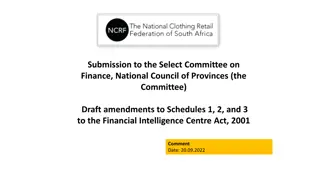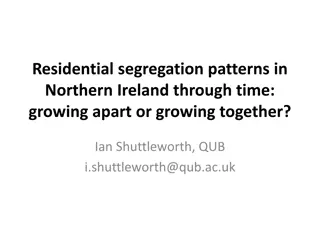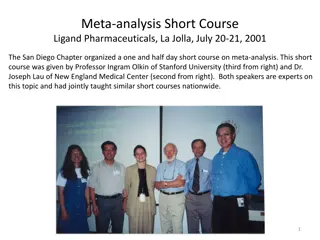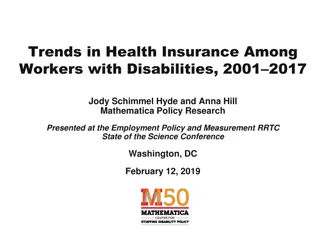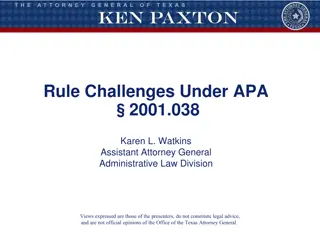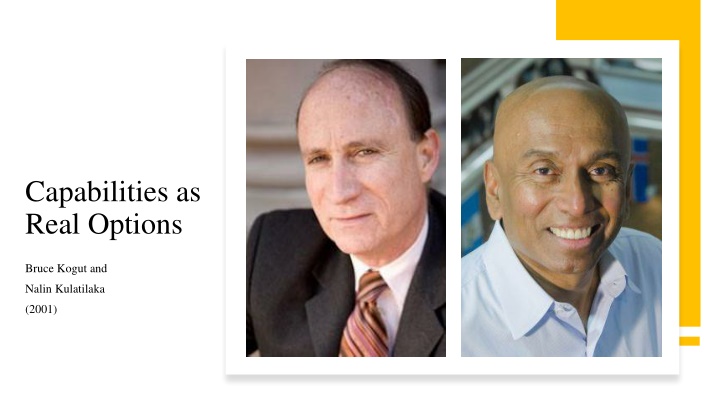
Real Options Theory in Strategizing: Enhancing Business Decision-Making
Explore the application of real options theory as a heuristic in strategic decision-making processes, emphasizing the value of market influences on resource evaluation and the need for flexibility in adapting to changing environments. Learn how irreversibility and market positioning play vital roles in determining competitive advantage.
Download Presentation

Please find below an Image/Link to download the presentation.
The content on the website is provided AS IS for your information and personal use only. It may not be sold, licensed, or shared on other websites without obtaining consent from the author. If you encounter any issues during the download, it is possible that the publisher has removed the file from their server.
You are allowed to download the files provided on this website for personal or commercial use, subject to the condition that they are used lawfully. All files are the property of their respective owners.
The content on the website is provided AS IS for your information and personal use only. It may not be sold, licensed, or shared on other websites without obtaining consent from the author.
E N D
Presentation Transcript
Capabilities as Real Options Bruce Kogut and Nalin Kulatilaka (2001)
Strategizing is the application of heuristic frames to analyze the world and to generate normative evaluations of potential avenues of implementation. What is the appropriate theoretical framing for strategizing? Outward-looking perspective: market positioning and industry analysis. Inward-looking perspective:firms choose their positions due to their unique resources (RBV). The core competence required to support a firm s strategy results from the firm s use of its resources. Introduction What about the intersection? What is neglected is that the market determines the value of those resources.
Structure of the paper Characterize the value and limitations of heuristics. Develop the use of real options as a heuristic and show how it is grounded in and throws light on three lines of thought of strategy: RBV, Organizational Theory, and Complex Adaptive Systems. Examine these ideas through a stylized mathematical description of the problem. The formalization of this article clarifies that the benefit of a real options heuristic is the imposition of a market test to derive the valuation of capabilities.
Strategy as Heuristic Strategy as Heuristic Cognitive science suggests that a heuristic can be classified as its cognitive frame (solution space) and the rules of search (algorithms to find solutions). Simon s (1969) procedural search: Due to the complexity of the problem, many heuristic algorithms provide "satisfactory but not clearly optimal solutions the contexts may only be partially understood, leading to misapplication of the knowledge. Since the environment stochastically changes over time, the strategic process, i.e., the choice of capabilities, must be flexible enough to respond to opportunities. A real option heuristic is a way to discern the value of particular paths of exploration in evolving environments. Three elements are jointly required for applying a real options heuristic: the provision of future managerial discretion to exercise the option (by definition), irreversibility, and uncertainty.
Irreversibility does not mean that firms cannot change; it is the timing of the change that matters: The benefits of a transformation decline as competitors themselves adopt new capabilities; Thus, irreversibility implies that the asset should be scarce and difficult to replicate in a timely way to support a strategy at a particular time. Irreversibility Core competence is a scarce factor that embeds complex options in future opportunities. But scarcity is not enough to determine the value of a competence. According to Real Options Theory, identifying unique assets relies on market valuations. Thus, the firm s market position will also matter in its search for a competitive advantage.
Uncertainty Organizational theory has viewed uncertainty as threateningthe stability of organizations. The underpinning reason is that increased risk might increase an organization's hazard of death. However, the Real Options model typically considers the upper boundary, or the probability of increasing growth, by exercising options. Those options result from the external environment and the correspondence between organizational practices and technologies. Those attributes are tightly coupled and dynamically co-evolve, making organizational change costly because it demands adaptations on both types. *Hysteresis: the phenomenon in which the value of a physical property lags behind changes in the effect causing it.
The notion of inertia poses the question of whether the benefits accruing from changes in the capability set offset the costs of change. Depending on the type of uncertainty the firm faces (smooth or granular environmental change), different types of capabilities will be preferred. In modular environments under smooth change, firms might use local learning to find superior ways to combine technological and organizational elements. Inertia In granular and highly uncertain environments, generalists organizations whose competencies are robust across many future states of the world will do better than specialists. Hence, organizational ecology suggests an escape from the inward-looking bias: firms that build general platforms capable of accounting for expectations regarding the evolution of the external environment are more likely to survive and grow.
Complex Adaptive Systems and Radical Change The value of changing resources and, hence, changing position requires evaluating the cost of change against the future unknown reward. Facing landscape ruggedness, moving from one peak to another implies an architectural change. Such change no longer involves experimentation with individual modules but requires a complex redesign of new sets of technical and organizational elements. This problem is, however, less severe because exploration permits the building of ridges between value peaks. It is exactly the evaluation of this correspondence between the exploration of new capabilities and the evolution of the market environment provided by applying a real options heuristic.
A Formal Description Pairing three concepts of scarce factors and the underlying asset, irreversibility and inertia, and the landscape ruggedness and option values, the authors formalize three principal ideas: 1. The stickiness of organizational and technological combinations requires a notion of time, that is, of irreversibility as indicated by the dynamic market valuation of organizational assets. 2. Distance in discrete combinations results in a radical difference between learning and recombination of modules within a family of organizational and technical elements and between families. 3. Uncertainty can be decomposed into continuous and granular measures of change. The formal description of understanding capabilities as an option has the important advantages of: Clearly defining a core competence in reference to a market valuation; Providing a clear statement of the trade-offs between learning and exploitation on the one hand and experimentation and exploration on the other.
How should we value an investment in new capabilities? The value of a capability depends not only on the internal assets but also on how those assets are deployed and on external market conditions. Looking Outside the Firm: Market Pricing Specifically, the value of the capability depends on its contribution to the price of product or factor prices whose risk is spanned by traded assets in the economy. To evaluate it, we need to consider the evolution of its quality-adjusted price, ?, which is determined by local supply and demand conditions.
Looking Inside the Firm: Capability Sets The firm s problem is to decide what capabilities it should use in the current period. This decision is highly idiosyncratic, being connected to the specific characteristics of each organization. The alternatives usually involve: Maintaining current capabilities; Continuing in the same family of capabilities but making incremental technological improvements or; Making a discontinuous organizational switch to a completely new type of technology. The switching costs encompass: Profit maximization problem: Combined with quality-adjusted input and output prices
Dynamic Valuation of the Critical Capability Set When future values of ? evolve stochastically, the current decision influences all future decisions as well, as represented by the following value function: As the equation indicates, the producer contemplates switching to a new capability set in each period. If the producer switches, it realizes new benefits function but pays switching costs. The presence of switching costs makes a forward-looking analysis necessary. Thus, at every period, the producer chooses the capability that maximizes the value of the project a dynamic capability choice:
Tradeoffs and switching points Inertia needs not be the consequence of myopia but is itself sensitive to environmental turbulence and a firm's competence. A more competent firm is, ironically, more subject to inertia. By staying in its current activities, the firm becomes increasingly more competent. However, the danger remains that ? will suddenly jump to a range or cross a critical threshold in which the firm's competence is no longer profitable competency trap.
Avoiding competency traps To speed its transition to new techniques and avoid competency traps, the firm may proactively allocate funding to exploration by experimenting with new techniques. This diversion of resources slows down its accumulation of learning with the current technology but increases the value of the option to switch to new capabilities by lowering the switching costs. By exploring the potential recombination of assets, the firm reduces the costs of successfully adopting radical change in its capabilities.
Real Option Analysis provides the theoretical foundations for using heuristics to derive capabilities. By conditioning an understanding of competence in relation to a market test, it identifies the coupling of organization and technology as the leading explanation for the irreversibility of investments in capabilities. According to the approach, because organizations consist of these coupled systems, the value of the firm is not reflected in the present value of its constituent parts but in the potential to deploy capabilities for innovation in existing markets or for addressing new markets. Conclusion Thus, the options approach allows firms to construct exploratory ridges between peaks to hedge against adverse changes in the landscape, thus dealing with instead of avoiding risk. Finally, it provides a reinterpretation of the concept of core competence : the firm s core competence is the capability set (i.e., combination of organization and technology elements) that permits the firm to dynamically choose the optimal strategy for a given price realization of the strategic factor.




